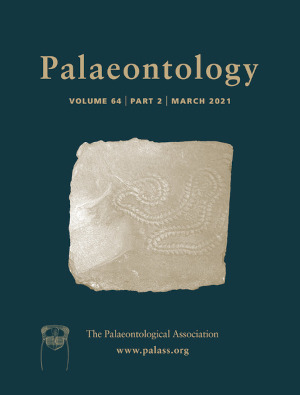Reg. Charity No. 1168330

Scaphitids rank among the commonest and best‐known Late Cretaceous ammonites, yet many aspects of their palaeobiology are still unresolved. Here, natural moulds and co‐occurring aptychi (calcitic coverings of the lower jaw) of Hoploscaphites constrictus crassus from the upper Maastrichtian of Poland are studied. For the first time in a scaphitid ammonite, growth marks are identified on the moulds and aptychi, which enable a reconstruction of the successive ontogenetic stages of the shell and aptychus. These are correlated to each other, allowing us to address two open issues in scaphitid palaeobiology: (1) estimation of individual growth rate and age; and (2) assessment of the aptychus as a possible protective operculum. As far as the growth rate of H. c. crassus is concerned, this accelerated rapidly at the onset of the mature body chamber formation and decelerated shortly before the cessation of growth. The resultant growth curve departs significantly from the generalized growth curve previously proposed for ammonites. In contrast, an age of five years at maturity, tentatively estimated here for H. c. crassus, conforms to the previous estimates for shallow‐water ammonites of comparable size. The role of the aptychus as an operculum is rejected for H. c. crassus, based on a significant misfit in size and shape between the aperture and aptychus recorded during ontogeny. These conclusions may probably be extended to closely related members of the European Hoploscaphites constrictus evolutionary lineage and to some other scaphitids with shells similar in size and shape to that of H. c. crassus.